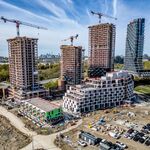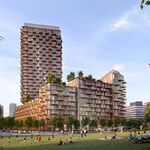It's not unheard of for government to adopt planning improvements presented by transit advocates, so this discussion could be useful -- particularly when the current city regime has not yet formally proposed an extensive transport plan.
The Fords may reject any improvements that involve taking away lane space or access from autos, but Toronto will eventually have to agree on certain surface upgrades. Here's where the dreaded "compromise" comes in: how to propose a realistic HOV/transit only network that acknowledges the real opposition to any lane loss for car drivers? Transit priority signalling also needs to be part of the discussion, especially while/if the Fords get around to fulfilling campaign promises about signalization changes.
Cases need to be made why surface transit only lanes or queue jump lanes are desirable, arguments are needed in favour of efficient use of the city's limited road space, benefits in economic development need to be laid out simply, and possible win-wins that include car drivers have to be identified...
It would be tricky, since it is the specifics that can derail general consensus. For example, making Church a one way thoroughfare kinda freaks me out, even if the plus is making Yonge more walking-friendly.
-ed d.




